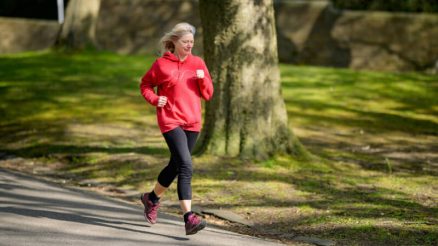Running is a fantastic way to stay fit and clear your head, but Mother Nature doesn’t always cooperate with perfect conditions. Whether it’s scorching summer heat, a biting winter chill, or oppressive humidity, extreme weather can make your regular run feel like an epic challenge. But don’t hang up your running shoes just yet! With the right preparation and strategies, you can safely and effectively enjoy your miles, no matter what the forecast brings.
This guide will equip you with essential tips for running in hot, cold, and humid conditions, helping you adapt to any climate and keep your training on track.
1. Running in Hot Weather: Beat the Heat Safely
Summer runs can be exhilarating, offering vibrant scenery and long daylight hours, but the heat poses significant risks like dehydration, heat exhaustion, and potentially life-threatening heatstroke. Prioritizing safety and smart strategies is absolutely crucial when the mercury rises. Your body’s ability to cool itself is directly impacted by high temperatures, making every run a more strenuous effort.
Timing is Everything
- Early Bird or Night Owl: The coolest parts of the day are typically early morning (before 8 AM) or late evening (after 6 PM). These times often feature lower temperatures and less intense sun, providing a more favorable environment for your run. Avoid running during the hottest part of the day, usually between 10 AM and 4 PM, when the sun is at its peak and the air temperature is highest. Consider checking the heat index, which factors in humidity, for a more accurate assessment of how hot it truly feels.
Hydration, Hydration, Hydration!
- Pre-hydrate: Start hydrating well before your run, ideally throughout the day leading up to it. Drink 16-20 ounces (approximately 0.5 liters) of water or a sports drink about 2-3 hours before you head out, and another 7-10 ounces (200-300 ml) 10-20 minutes before starting. This ensures your body’s fluid levels are topped up.
- During the Run: Carry water with you using a hydration belt, handheld bottle, or vest, or plan routes that have easily accessible water fountains. Aim to drink 4-6 ounces (100-170 ml) every 15-20 minutes. For runs longer than an hour, especially those that involve heavy sweating, consider a sports drink (with electrolytes like sodium and potassium) to replenish essential minerals lost through sweat, helping to prevent cramping and maintain fluid balance.
- Post-hydrate: Continue to rehydrate generously after your run to replace all lost fluids. Weigh yourself before and after your run; for every pound lost, aim to drink 16-24 ounces of fluid. Water is good, but a sports drink or even salty snacks can help restore electrolyte balance.
Dress for Success (Light and Loose)
- Wicking Fabrics: Opt for lightweight, light-colored, loose-fitting clothing made of moisture-wicking fabrics (such as polyester, nylon, or specialized running blends). These materials are designed to pull sweat away from your skin, allowing it to evaporate efficiently and helping to cool your body. Avoid cotton, which absorbs sweat, becomes heavy, and stays wet, hindering the cooling process and potentially causing chafing.
- Minimal Layers: Wear as little as possible to maximize skin exposure for sweat evaporation. Shorts and a tank top or short-sleeved shirt are often the best choices.
- Sun Protection: Don’t forget a wide-brimmed hat or visor to shade your face and scalp from direct sunlight, reducing heat absorption. Sunglasses are also crucial to protect your eyes from harmful UV rays. Always apply a broad-spectrum, sweat-proof sunscreen (SPF 30 or higher) to all exposed skin at least 15-30 minutes before heading out.
Listen to Your Body
- Slow Your Pace: It’s important to adjust your expectations. You won’t be able to maintain your usual pace or intensity in the heat. Slow down, reduce your mileage, and don’t push yourself too hard. It’s better to complete a shorter, slower run safely than to attempt your usual workout and risk overheating.
- Walk Breaks: Don’t be afraid to take frequent walk breaks if you feel yourself overheating or experiencing discomfort. These breaks allow your body a chance to recover and regulate its temperature.
- Recognize Warning Signs: Be acutely aware of the symptoms of heat exhaustion or heatstroke. Symptoms of heat exhaustion include dizziness, nausea, headache, heavy sweating, muscle cramps, weakness, and cool, clammy skin. Heatstroke is a medical emergency and may present with confusion, disorientation, dry hot skin (though sometimes still sweaty), rapid pulse, and loss of consciousness. If you experience any of these symptoms, stop running immediately, seek shade, hydrate with water or a sports drink, and cool your body (e.g., with wet towels or a cold shower). If symptoms persist or worsen, seek immediate medical attention.
2. Running in Cold Weather: Embrace the Chill
Winter running can be beautiful and invigorating, with crisp air, quiet trails, and serene landscapes. The fresh, cold air can be a welcome change, but the challenges of low temperatures, wind chill, and potential ice or snow require strategic planning and careful execution to ensure a safe and comfortable run. Prioritizing warmth and preventing cold-related injuries like frostbite and hypothermia is paramount.
Layer Up (The Key to Warmth)
- Base Layer (Wicking): This is the foundation of your cold-weather running attire and goes directly against your skin. Its primary function is to manage moisture. Choose materials like synthetic blends (polyester, polypropylene) or natural fibers such as merino wool. These fabrics are engineered to pull sweat away from your body, transferring it to outer layers where it can evaporate. This wicking action is crucial because wet skin in cold temperatures rapidly loses heat, leading to a chilling effect. Never wear cotton as a base layer, as it absorbs and holds moisture, becoming heavy, cold, and uncomfortable.
- Mid-Layer (Insulation): The mid-layer provides critical insulation by trapping warm air close to your body. Materials like fleece (light to medium weight, depending on the temperature) or a thin technical jacket work well. This layer’s thickness should be adaptable; on moderately cold days, a lighter fleece might suffice, while on very cold days, you might need a thicker insulating layer. The goal is to provide warmth without excessive bulk, allowing for freedom of movement.
- Outer Layer (Protection): This is your protective shield against the elements. The outer layer should be windproof and, depending on conditions, water-resistant or fully waterproof. Its purpose is to block chilling winds and keep out rain or snow. Look for jackets that offer breathability to prevent overheating and moisture buildup from the inside. Many running-specific outer layers feature ventilation zips or breathable membranes to help regulate temperature.
- Adjust for Activity: A common mistake is to overdress. Remember that your body generates a significant amount of heat once you start running. A good rule of thumb is to dress as if it’s 10-20 degrees Fahrenheit (5-10 degrees Celsius) warmer than the actual temperature outside. You should feel slightly chilly, even a bit uncomfortable, for the first 5-10 minutes of your run. If you feel warm before you even start, you’ve likely put on too many layers. This “cold start” approach ensures you won’t overheat as your body temperature rises.
Protect Your Extremities
- Head: Your head is a major source of heat loss, with a significant percentage of body heat escaping through the scalp. Wearing a hat, beanie, or a thermal headband is essential to prevent this heat loss and maintain a stable core body temperature. For very cold days, balaclavas or neck gaiters can provide additional protection for your face, ears, and neck.
- Hands: Your hands and fingers are particularly susceptible to cold-related injuries like frostnip and frostbite due to reduced blood flow in cold conditions. Gloves are almost always necessary. For milder cold, lightweight running gloves are fine. For more extreme cold, mittens offer superior warmth as they allow your fingers to share heat. If your hands tend to get very cold, consider wearing thin liner gloves under mittens or a heavier pair of gloves.
- Feet: Keeping your feet dry and warm is vital. Opt for moisture-wicking socks made of wool (like merino wool) or synthetic blends. Avoid cotton socks, which retain moisture and lead to cold, damp feet and potential blisters. For runs in snow, slush, or wet conditions, consider running shoes with a waterproof or water-resistant upper (many brands offer Gore-Tex versions). This will prevent your feet from getting soaked and freezing.
Visibility and Safety
- Be Seen: Winter days are often shorter, darker, and can have reduced visibility due to clouds, snow, or fog. This makes visibility a critical safety concern. Always wear reflective gear and bright, high-contrast colors (neons, bright yellows, oranges) to make yourself as visible as possible to motorists, cyclists, and other pedestrians. Consider carrying a headlamp or wearing a reflective vest, especially if you’re running before sunrise, after sunset, or in overcast conditions.
- Footing: Icy patches, black ice (invisible ice), and slippery surfaces from compacted snow or slush are major hazards. Slow your pace considerably on questionable terrain, shorten your stride, and lift your feet rather than shuffling. Pay close attention to shaded areas, bridges, and underpasses, where ice tends to persist. For extreme icy conditions, consider investing in specialized traction devices like Yaktrax or similar microspikes that can be slipped over your running shoes to provide enhanced grip. Trail running shoes often have more aggressive outsoles that can offer better traction in snowy or muddy conditions.
Warm-Up and Cool-Down
- Indoor Warm-Up: Before stepping out into the biting cold, perform a few minutes of dynamic stretches or light cardio indoors. This helps warm up your muscles, increases blood flow, and prepares your body for the shock of the cold. A pre-run warm-up reduces the risk of muscle strains and injuries, which are more common when muscles are cold and stiff.
- Don’t Linger: As soon as your run is complete, get out of your wet, sweaty clothes and into dry ones immediately. Your body temperature can drop very rapidly once you stop exercising, increasing the risk of hypothermia. A warm shower or bath can help gradually regulate your body temperature back to normal. Rehydrate with warm fluids like tea or hot water to help warm your core.
Other Cold Weather Considerations
- Wind Chill: Pay attention to the wind chill factor, as it can make the effective temperature feel significantly colder than the actual air temperature. Adjust your layers accordingly, focusing on windproof outer layers.
- Sun Protection (Yes, in Winter!): Even in winter, UV rays can be strong, especially with snow reflection. Apply sunscreen to exposed skin and wear sunglasses to protect your eyes.
- Protect Your Lungs: For very cold air, a buff or balaclava pulled over your mouth and nose can help warm the air before it reaches your lungs, preventing irritation and “runner’s cough.”
- Know When to Go Indoors: There are days when the cold is simply too extreme (e.g., temperatures below 0°F / -18°C, or severe wind chill warnings). On such days, it’s safer and more sensible to move your workout indoors to a treadmill or an indoor track. Safety should always be your top priority.
3. Running in Humid Weather: The Invisible Sweat Test
Running in humid weather presents a unique and particularly challenging set of obstacles for athletes. While high temperatures alone can be taxing, the addition of high humidity creates an environment where your body’s most crucial cooling mechanism—the evaporation of sweat—becomes significantly less effective. This can make even a moderate temperature feel stifling, leading to a much higher perceived effort and increased risk of heat-related illnesses. Humidity turns your sweat into an “invisible test,” as it often beads on your skin rather than evaporating, making it feel heavy and sticky. Understanding this core physiological challenge is the first step to conquering humid runs.
Understand the Effects
- Reduced Evaporation: High humidity means the air is already saturated with moisture. When you sweat, the air can’t absorb much more water vapor, so your sweat doesn’t evaporate effectively. This prevents your body from efficiently releasing heat, causing your core temperature to rise more quickly.
- Increased Perceived Temperature: The “feels like” temperature or heat index can be significantly higher than the actual air temperature because the humidity makes it feel much hotter and more oppressive. What might be a moderate temperature in dry air can feel stifling and dangerous with high humidity.
Adjust Your Expectations
- Slow Down: Just like in hot weather, you must slow your pace considerably. Your heart rate will be significantly higher at a given pace in humid conditions compared to dry conditions, as your body works harder to cool itself. Don’t worry about hitting your usual splits; focus on effort and how you feel.
- Shorter Runs: Consider reducing the length of your runs or breaking them into shorter segments with rest periods in between. If your typical run is 60 minutes, try two 30-minute runs with a break, or simply reduce it to 40 minutes. Listen to your body and prioritize safety over mileage.
Strategic Hydration
- Consistent Hydration: Hydration is even more critical in humidity due to the profuse sweating your body will attempt to do. Follow the same pre-, during, and post-run hydration strategies as for hot weather, but be prepared to potentially increase your fluid intake even further.
- Electrolytes: Sports drinks containing electrolytes (sodium, potassium, etc.) are highly recommended in humid conditions. You lose a significant amount of these essential minerals through profuse sweating, and replenishing them helps maintain fluid balance, prevent cramps, and support nerve and muscle function.
Clothing and Cooling
- Minimal, Wicking Clothing: Again, light-colored, minimal, loose-fitting, moisture-wicking clothing is your best friend. These materials promote airflow and help whatever sweat does evaporate to do so more effectively.
- Cooling Strategies: Be proactive in cooling your body. If you pass a water fountain or have a water bottle, consider pouring water over your head, splashing it on your neck and arms, or soaking a bandana and tying it around your neck. The evaporative cooling from these strategies can provide significant relief. Using cold towels or ice packs on pulse points (wrists, neck, groin, armpits) before or after your run can also help lower core temperature.
Post-Run Recovery
- Shower and Rehydrate: As soon as you finish your run, get out of your sweaty clothes and take a cool or lukewarm shower to help lower your body temperature. Continue rehydrating diligently, and ensure you’re replacing lost electrolytes. Prioritize rest and allow your body ample time to recover, as humid runs can be particularly taxing on your system.
Conclusion: Adapt and Thrive
Running in extreme weather conditions is a test of adaptability, resilience, and smart planning. By understanding how your body reacts to heat, cold, and humidity, and by implementing these practical tips, you can transform a challenging run into a rewarding experience. Always prioritize your safety, listen closely to your body’s signals, and remember that some days, it’s perfectly fine to adjust your expectations, reduce intensity, or take your workout indoors on a treadmill or elliptical. With smart planning and a mindful approach, you can keep logging those miles and continue to enjoy running in every season and any climate!








